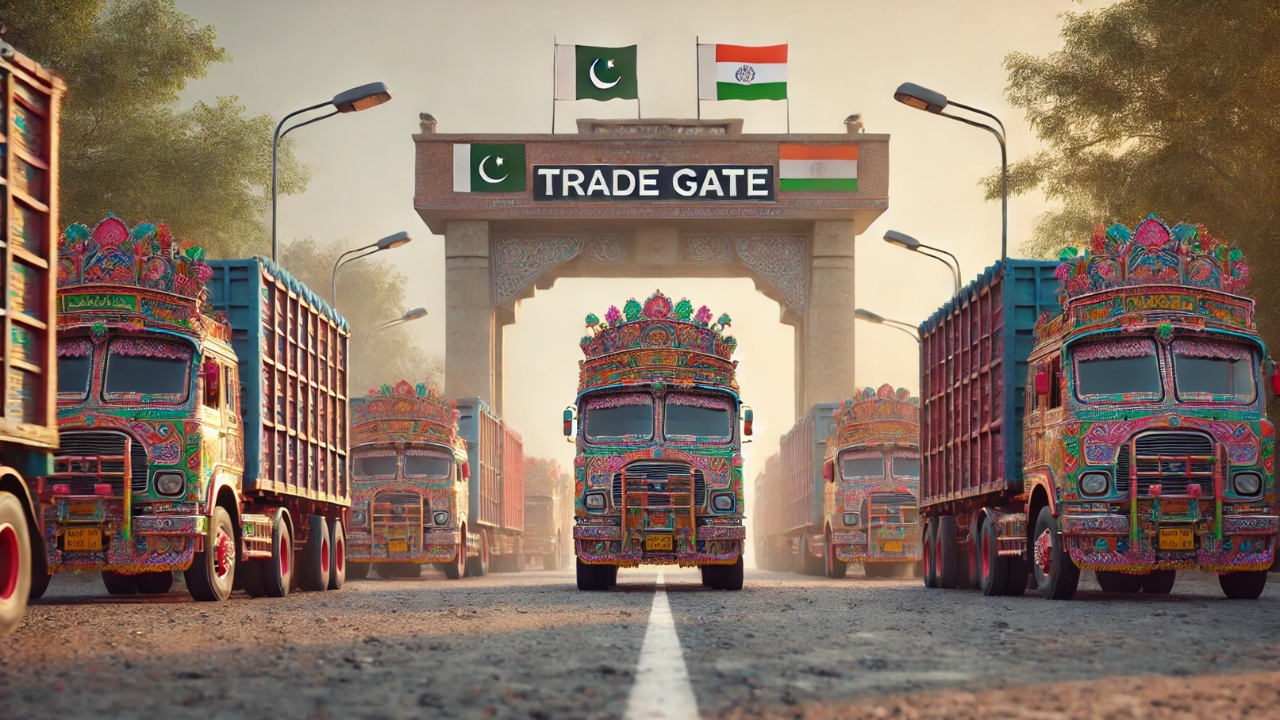Independent power producers and business owners in the pharmaceutical industry worriedly watched the developments of the World Bank meetings on Sunday. This is because, during the IMF and World Bank meetings, Finance Minister Muhammad Aurangzeb stressed the importance of trade links with India.
Pakistan is a net importer of power and pharmaceutical products, which ensures that businesses operating in these fields face little local competition. But if Islamabad lifts the red tape on trade with New Delhi, the Wagha-Attari border is bound to see major truck movement. This is because India is a net exporter of power and pharmaceuticals – which Pakistan could buy.
If trade is to open up, importers in Pakistan might become inclined to purchase medicines from India as opposed to the United States – which is extremely far away compared to India. This is likely to reduce shipping times from 44 days down to under a day in optimal conditions. Due to reduced travel times and costs, there might be an increase in the import value of pharmaceutical products – a figure that stood at $1.38 billion in 2022.
The Pakistani pharmaceutical industry saw a 15.3 per cent growth in 2023, with more growth projected for the near future. However, if trade restrictions are reduced, the current growth levels of the pharmaceutical sector could take a serious hit. This will be due to the world-class quality of the medicines of the well-established Indian pharmaceutical industry.
Fewer restrictions on trade with India are likely to spell bad news for local pharmaceutical companies as the introduction of extra competition flooding the market with low-price medicine will reduce both growth rates and profit margins.
Additionally, with Pakistan importing over $13 million in electricity in 2023, the possibility of importing Indian electricity is an attractive one. This is because India could offer more competitive rates on their electricity than our current trading partner, Iran.
Moreover, if India is to sign power deals with Pakistan at beneficial rates, independent power producers might sense danger, too. This is due to the fact that earlier this month, five of them were let go as Islamabad terminated their contracts.
However, if trade is to open up, it will significantly contribute towards a welfare increase for citizens. This is because consumers will have a wider variety of goods to choose from in addition to lower prices.
Local businesses, however, will also have to reduce their prices accordingly if they want to ensure that a steady stream of customers purchase their products.
A few local industries might be able to capitalize on normalizing trade relations with India. These could be the sports and cement industries. With Indian cement exports falling over 65 per cent from 2015-2022 to meet domestic demand, Pakistan’s cement industry could step in and capitalize on Indian demand.
Most importantly, on a macro level, the normalization of trade and restoration of Pak-India relations will likely result in a great deal of prosperity for Pakistan. This is because the economic binding and strengthening of trade links between the two nations will reduce the political tensions – and the resources that are expended on said tensions.
With Aurangzeb’s mindset on achieving economic prosperity, the main question on everyone’s minds is whether this plan will ever come to fruition. The answer can only be found with time.







